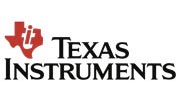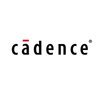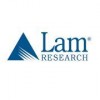
i
TDK India Private
Limited
Filter interviews by
TDK India Private Limited Interview Questions and Answers
62 Interview questions
Transformers are electrical devices that transfer electrical energy between two or more circuits through electromagnetic induction.
Transformers are used to increase or decrease voltage levels in electrical circuits.
There are two main types of losses associated with transformers: copper losses and iron losses.
Copper losses occur due to the resistance of the copper windings in the transformer and are proportional to...
High frequency in transformers is used in applications such as power distribution, induction heating, and medical equipment.
High frequency transformers are used in power distribution systems to step up or step down voltage levels efficiently.
They are also used in induction heating applications for processes like welding, melting, and heat treatment.
In medical equipment, high frequency transformers are used in devi...
I have extensive knowledge and experience with transducers, switching circuits, RTD, and SCADA PLC automation from my previous job roles.
Transducers are devices that convert one form of energy into another, such as a pressure transducer converting pressure into an electrical signal.
Switching circuits are used to control the flow of current in electronic devices, such as relays or MOSFETs.
RTD stands for Resistance ...
Power loss in electrical systems can be categorized into core losses, hysteresis loss, and eddy current loss.
Core losses occur in the magnetic core of transformers and include hysteresis and eddy current losses.
Hysteresis loss is caused by the reversal of magnetization in the core material, leading to energy dissipation in the form of heat.
Eddy current loss is caused by circulating currents induced in the core mat...
Strategies for reducing losses in the transformation process include implementing lean manufacturing principles, improving maintenance practices, and investing in employee training.
Implementing lean manufacturing principles to eliminate waste and improve efficiency
Improving maintenance practices to prevent breakdowns and reduce downtime
Investing in employee training to enhance skills and knowledge
Utilizing technol...
I am looking for a competitive salary that reflects my skills and experience, ideally in the range of $50,000 to $60,000 annually.
Research industry standards: For example, the average salary for firefighters in my area is around $55,000.
Consider benefits: A comprehensive benefits package can enhance overall compensation.
Factor in experience: With 5 years of experience, I believe a salary on the higher end is justi...
I have extensive experience in firefighting, emergency response, and community safety education.
Completed rigorous training at the Fire Academy, focusing on fire suppression techniques and rescue operations.
Participated in over 100 emergency response calls, including structure fires, wildfires, and medical emergencies.
Conducted fire safety workshops in schools, educating children on fire prevention and emergency p...
Yes, my diploma is from a recognized government institute, ensuring quality education and training for my fireman career.
The diploma was obtained from a government-accredited fire academy.
Government institutes often have standardized training programs.
Examples include the National Fire Academy and local fire training centers.
My name is Alex Johnson, a dedicated firefighter with a passion for serving the community and ensuring safety for all.
I have been a firefighter for over 5 years, responding to various emergencies.
My training includes advanced first aid and fire safety protocols.
I enjoy community outreach programs, teaching fire safety to children.
In my free time, I volunteer at local events to promote fire awareness.
LOB stands for Line of Business, referring to a specific product or service within a company.
LOB helps to categorize different business activities within an organization.
It can also refer to a specific department or division that focuses on a particular product or service.
For example, a company may have a separate LOB for their software products and another for their hardware products.
TDK India Private Limited Interview Experiences
39 interviews found
I appeared for an interview in Jan 2025.
(4 Questions)
- Q1. What do you know about transformers and the types of losses associated with them?
- Ans.
Transformers are electrical devices that transfer electrical energy between two or more circuits through electromagnetic induction.
Transformers are used to increase or decrease voltage levels in electrical circuits.
There are two main types of losses associated with transformers: copper losses and iron losses.
Copper losses occur due to the resistance of the copper windings in the transformer and are proportional to the ...
- Q2. What are the details regarding power loss, core losses, hysteresis loss, and eddy current loss?
- Ans.
Power loss in electrical systems can be categorized into core losses, hysteresis loss, and eddy current loss.
Core losses occur in the magnetic core of transformers and include hysteresis and eddy current losses.
Hysteresis loss is caused by the reversal of magnetization in the core material, leading to energy dissipation in the form of heat.
Eddy current loss is caused by circulating currents induced in the core material...
- Q3. What are the types of strategies for reducing losses in the current transformation process?
- Ans.
Strategies for reducing losses in the transformation process include implementing lean manufacturing principles, improving maintenance practices, and investing in employee training.
Implementing lean manufacturing principles to eliminate waste and improve efficiency
Improving maintenance practices to prevent breakdowns and reduce downtime
Investing in employee training to enhance skills and knowledge
Utilizing technology t...
- Q4. What are the applications of high frequency in transformers, and how does it affect power generation and transformation?
- Ans.
High frequency in transformers is used in applications such as power distribution, induction heating, and medical equipment.
High frequency transformers are used in power distribution systems to step up or step down voltage levels efficiently.
They are also used in induction heating applications for processes like welding, melting, and heat treatment.
In medical equipment, high frequency transformers are used in devices l...
(3 Questions)
- Q1. Can you describe your previous companies and the job roles you held there, as well as the related skills you learned from those experiences?
- Ans.
I have worked in two companies in the past, where I held roles as a Furness Engineer and Shift Incharge. I gained skills in maintenance, supervision, and problem-solving.
Worked as a Furness Engineer at Company A, responsible for maintaining and troubleshooting furnaces
Promoted to Shift Incharge at Company B, overseeing production shifts and managing a team of technicians
Learned skills in maintenance, supervision, probl...
- Q2. What do you know about transducers, switching circuits, RTD, and SCADA PLC automation based on your previous job experiences?
- Ans.
I have extensive knowledge and experience with transducers, switching circuits, RTD, and SCADA PLC automation from my previous job roles.
Transducers are devices that convert one form of energy into another, such as a pressure transducer converting pressure into an electrical signal.
Switching circuits are used to control the flow of current in electronic devices, such as relays or MOSFETs.
RTD stands for Resistance Tempe...
- Q3. Details about ISO certification required for a company. EHS, OH&S, QMS - details about it, CAPA, RCA, FMEA, why why analysis, PDCA details about it?
(2 Questions)
- Q1. What is your family background, including their occupations? Are you open to working rotational shifts as well as night shifts?
- Ans.
My family background is diverse, with members in various occupations. I am open to working rotational and night shifts.
My family background is diverse, with members in occupations such as teachers, engineers, and business owners.
I am open to working rotational shifts as it allows for a variety in work schedule and night shifts if required for the job.
I understand the importance of flexibility in work hours and am willi...
- Q2. What do you know about this company and the background of the job? What are your expectations regarding salary and benefits?
- Ans.
The company is a leading engineering firm with a focus on providing high-quality services. The job involves overseeing engineering operations and managing shifts.
Company is known for its expertise in engineering services
Job involves supervising engineering operations and shift management
Expectations for salary and benefits should be competitive with industry standards
(1 Question)
- Q1. What is the notice period required for your previous job, when would you be able to join us, and do you require any cab or pick-and-drop service?
- Ans.
Notice period is 30 days, can join after that, no cab or pick-and-drop service required.
Notice period for previous job is 30 days
Can join after completing notice period
No requirement for cab or pick-and-drop service
Interview Preparation Tips
I appeared for an interview before Jul 2024, where I was asked the following questions.
- Q1. Why you want to join TDK ?
- Q2. What is the goal for next 10 yrs
Interview Preparation Tips
I appeared for an interview in Apr 2025, where I was asked the following questions.
- Q1. Why would you like to relocate.?
- Q2. What are the expectation from us as a Company.?
- Q3. What make you become an engineer ?
Interview Preparation Tips
I applied via Walk-in and was interviewed in Sep 2024. There was 1 interview round.
(2 Questions)
- Q1. What is LOB ?
- Ans.
LOB stands for Line of Business, referring to a specific product or service within a company.
LOB helps to categorize different business activities within an organization.
It can also refer to a specific department or division that focuses on a particular product or service.
For example, a company may have a separate LOB for their software products and another for their hardware products.
- Q2. How to make capacity sheet
- Ans.
Capacity sheet is a document used to track and manage the capacity of resources in a production facility.
Identify all resources involved in the production process
Determine the capacity of each resource in terms of units or time
Create a spreadsheet with columns for each resource and rows for time periods
Input the capacity of each resource for each time period
Update the sheet regularly to reflect changes in capacity or p...
I applied via Approached by Company and was interviewed in Jul 2024. There were 2 interview rounds.
They asked about my work experience, technical expertise and problem solving abilities.
(2 Questions)
- Q1. What were your achievement s of previous job?
- Ans.
Implemented MES system for a manufacturing company, resulting in 20% increase in production efficiency.
Successfully led the implementation of MES system for a manufacturing company
Achieved a 20% increase in production efficiency through the implementation
Trained and supported end-users in utilizing the MES system effectively
- Q2. Given a scenario and asked the troubleshooting steps
Interview Preparation Tips
- MES
- SQL Server
- Programming
- C#.Net
(5 Questions)
- Q1. What is your name
- Ans.
My name is Alex Johnson, a dedicated firefighter with a passion for serving the community and ensuring safety for all.
I have been a firefighter for over 5 years, responding to various emergencies.
My training includes advanced first aid and fire safety protocols.
I enjoy community outreach programs, teaching fire safety to children.
In my free time, I volunteer at local events to promote fire awareness.
- Q2. What about your experience
- Ans.
I have extensive experience in firefighting, emergency response, and community safety education.
Completed rigorous training at the Fire Academy, focusing on fire suppression techniques and rescue operations.
Participated in over 100 emergency response calls, including structure fires, wildfires, and medical emergencies.
Conducted fire safety workshops in schools, educating children on fire prevention and emergency proced...
- Q3. What salary do you want
- Ans.
I am looking for a competitive salary that reflects my skills and experience, ideally in the range of $50,000 to $60,000 annually.
Research industry standards: For example, the average salary for firefighters in my area is around $55,000.
Consider benefits: A comprehensive benefits package can enhance overall compensation.
Factor in experience: With 5 years of experience, I believe a salary on the higher end is justified.
...
- Q4. Where are you from
- Ans.
I hail from a small town nestled in the mountains, known for its vibrant community and breathtaking natural scenery.
The town is surrounded by lush forests and hiking trails, perfect for outdoor enthusiasts.
We have a close-knit community that comes together for local events and festivals.
The area is rich in history, with several landmarks dating back to the early settlers.
Our local fire department is a vital part of the...
- Q5. Is your diploma from a government institute
- Ans.
Yes, my diploma is from a recognized government institute, ensuring quality education and training for my fireman career.
The diploma was obtained from a government-accredited fire academy.
Government institutes often have standardized training programs.
Examples include the National Fire Academy and local fire training centers.
Interview Preparation Tips
(1 Question)
- Q1. About your self
(1 Question)
- Q1. What is tpm type
- Ans.
TPM stands for Total Productive Maintenance, a type of maintenance strategy focused on maximizing the efficiency and effectiveness of equipment.
TPM involves proactive maintenance to prevent breakdowns and improve overall equipment effectiveness
It emphasizes employee involvement and ownership of equipment maintenance
TPM aims to eliminate the 6 big losses: breakdowns, setup and adjustment time, idling and minor stoppages...
Skills evaluated in this interview
I appeared for an interview in Nov 2024, where I was asked the following questions.
- Q1. Why are you looking for a change.
- Q2. Where do you see yourself in this company if at all recruited
- Ans.
I envision growing into a leadership role, driving strategic initiatives and mentoring future talent within the company.
Leadership Development: I aim to take on leadership responsibilities, guiding teams to achieve their goals, similar to how I led a project that increased efficiency by 30%.
Strategic Initiatives: I plan to contribute to the company's strategic direction, leveraging my experience to identify new market ...
Interview Preparation Tips
I appeared for an interview in Nov 2024, where I was asked the following questions.
- Q1. Why you are here ?
- Q2. What is your previous job about?
- Q3. Explain your profile & work you did, explain your strenghts
Interview Preparation Tips
I applied via Recruitment Consulltant and was interviewed in Dec 2023. There were 3 interview rounds.
MCQ type exam to qualify for the technical interview.
(6 Questions)
- Q1. What is Capacitor?
- Ans.
A capacitor is an electronic component that stores and releases electrical energy.
A capacitor consists of two conductive plates separated by an insulating material called dielectric.
It stores electrical energy in an electric field between the plates.
Capacitors are commonly used in electronic circuits for energy storage, filtering, timing, and coupling.
They can be found in various devices such as power supplies, amplifi...
- Q2. What is Power factor?
- Ans.
Power factor is a measure of how effectively electrical power is being used in a circuit.
Power factor is the ratio of real power (kW) to apparent power (kVA) in an AC circuit.
It indicates the efficiency of power usage and the presence of reactive power.
A power factor of 1 indicates all power is being used effectively, while a power factor less than 1 indicates inefficiency.
Inductive loads (e.g., motors) have lagging po...
- Q3. How the motor started works?
- Ans.
The motor starter is a device that starts and stops the motor by controlling the flow of electrical power.
The motor starter consists of a contactor, overload relay, and control circuit.
When the start button is pressed, the control circuit energizes the coil of the contactor, closing its contacts and allowing current to flow to the motor.
The overload relay protects the motor from excessive current by sensing the current...
- Q4. Types of motor - specifically the capacitor start and run motors.
- Ans.
Capacitor start and run motors are types of motors commonly used in various applications.
Capacitor start motors use a capacitor to provide high starting torque and are commonly used in appliances like air conditioners and refrigerators.
Capacitor run motors use a capacitor to improve the motor's efficiency and power factor, and are often found in fans, pumps, and compressors.
Both types of motors have advantages and disa...
- Q5. Types of capacitor and its function.
- Ans.
Capacitors are electronic components that store and release electrical energy. They come in various types and have different functions.
Electrolytic capacitors are commonly used in power supply circuits to smooth out voltage fluctuations.
Ceramic capacitors are used for high-frequency applications and noise suppression.
Film capacitors are suitable for applications requiring high voltage and high current handling.
Tantalum...
- Q6. What is dielectric?
- Ans.
Dielectric is a material that does not conduct electricity but can store and transmit electric charge.
Dielectric materials have high electrical resistance.
They are used in capacitors to store and release electrical energy.
Examples of dielectric materials include glass, rubber, and plastic.
Dielectric strength is a measure of a material's ability to withstand electrical stress without breaking down.
Dielectric constant is...
(1 Question)
- Q1. Which department would you like to work with to contribute to the organization?
Interview Preparation Tips
Go confidently with what the questions are.
If you face any difficulties in languages to deliver or what you want to express you can ask interviewer for language choice.
Top trending discussions






TDK India Private Limited Interview FAQs
Some of the top questions asked at the TDK India Private Limited interview -
The duration of TDK India Private Limited interview process can vary, but typically it takes about less than 2 weeks to complete.
Tell us how to improve this page.
TDK India Private Limited Interviews By Designations
- TDK India Private Limited Senior Engineer Interview Questions
- TDK India Private Limited Assistant Engineer Interview Questions
- TDK India Private Limited Production Engineer Interview Questions
- TDK India Private Limited Junior Engineer Apprentice Interview Questions
- TDK India Private Limited Junior Engineer Interview Questions
- TDK India Private Limited Software Engineer Interview Questions
- TDK India Private Limited Software Developer Interview Questions
- TDK India Private Limited Process Engineer Interview Questions
- Show more
Interview Questions for Popular Designations
Overall Interview Experience Rating
based on 54 interview experiences
Difficulty level
Duration
Interview Questions from Similar Companies
TDK India Private Limited Reviews and Ratings
based on 636 reviews
Rating in categories
|
Senior Engineer
69
salaries
| ₹5.2 L/yr - ₹11 L/yr |
|
Production Engineer
61
salaries
| ₹2.8 L/yr - ₹7.1 L/yr |
|
Engineer
59
salaries
| ₹3.3 L/yr - ₹7.5 L/yr |
|
Assistant Engineer
56
salaries
| ₹2.7 L/yr - ₹6.2 L/yr |
|
Deputy Manager
48
salaries
| ₹12 L/yr - ₹20 L/yr |

Intel

Apar Industries

Molex

Applied Materials
- Home >
- Interviews >
- TDK India Private Limited Interview Questions













